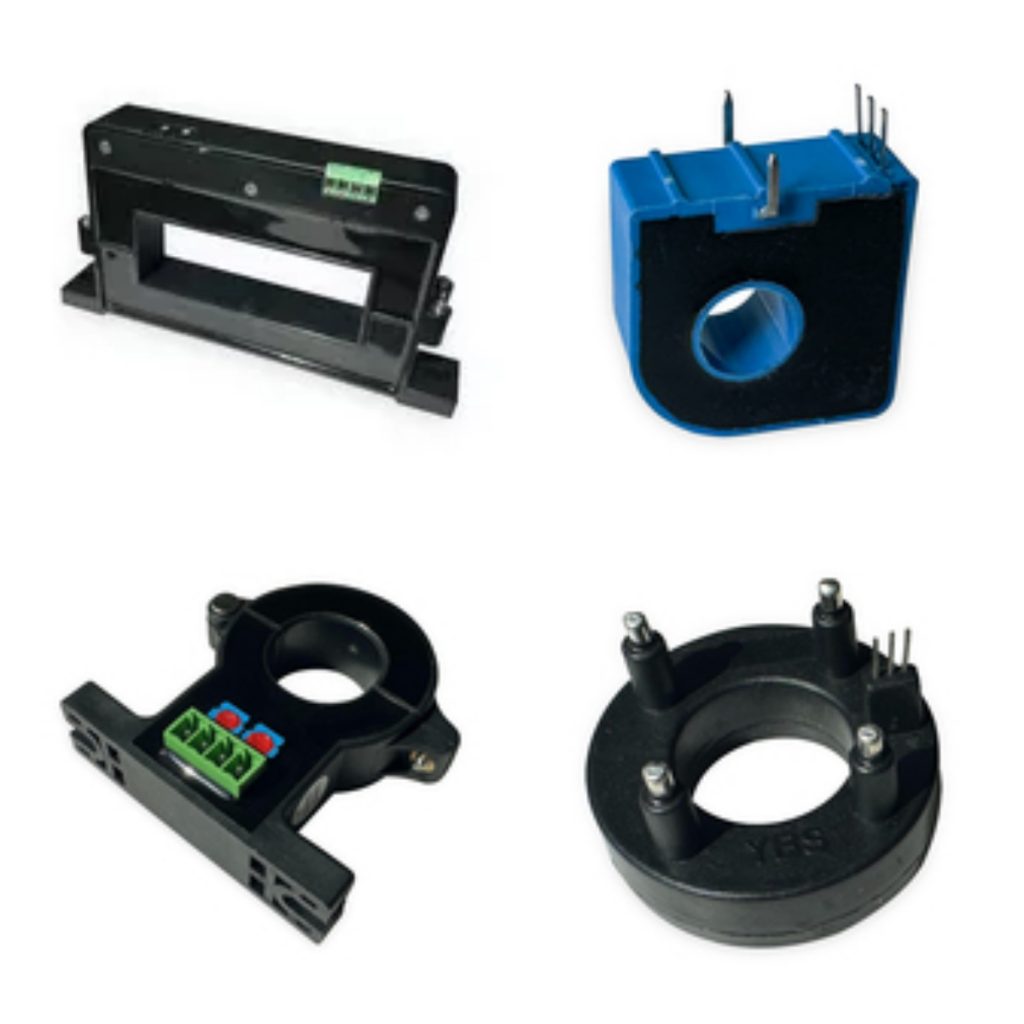Open-loop current sensors are essential components in modern industrial current sensing. They measure the current flowing in a conductor through a non-contact method and convert the current signal into a standardized output signal for use by monitoring systems. Compared to traditional current sensing methods, open-loop current sensors offer significant advantages, such as voltage isolation, safety and reliability, and easy installation. They have become indispensable components in industrial automation, renewable energy generation, and smart grids.technically, open-loop current sensors operate based on the Hall effect principle. When current flows through a conductor, it generates a magnetic field. The Hall element in the sensor detects the strength of this magnetic field and converts it into a corresponding electrical signal. The entire measurement process forms an open-loop system, eliminating the need for feedback compensation mechanisms, hence the name “open-loop.” This design makes open-loop current sensors relatively simple in structure while maintaining high measurement accuracy and reliability.

The core technology of open-loop current sensors is the Hall effect, a physical phenomenon discovered by American physicist Edwin Hall in 1879. The Hall effect states that when current flows through a conductor placed in a magnetic field, if the current direction is perpendicular to the magnetic field, a measurable potential difference is generated across the conductor. This potential difference is called the Hall voltage. The value of the Hall voltage is proportional to the product of the current and the magnetic field. This relationship provides the theoretical basis for non-contact current measurement.
In modern open-loop current sensors, the Hall element is typically made of semiconductor materials (such as gallium arsenide and indium antimonide), which exhibit significant Hall effect properties. When the magnetic field generated by the measured current acts on the Hall element, the element outputs a voltage signal proportional to the magnetic field strength achieving current-to-voltage conversion.
The performance of an open-loop current sensor depends largely on its magnetic circuit design. A high-quality magnetic circuit design effectively collects and guides the magnetic field generated by the measured current, concentrating it on the Hall element while suppressing interference from external stray magnetic fields. The magnetic circuit of a typical open-loop sensor consists of a high-permeability core, typically made of advanced soft magnetic materials such as nanocrystalline alloys or Permalloy. These materials offer high permeability,and excellent temperature stability.
The magnetic circuit is typically designed as a ring or rectangular structure, with an air gap to contain the Hall element. When the measured conductor passes through the center of the magnetic circuit, the magnetic field generated by the conductor current is guided by the magnetic circuit and concentrated at the air gap according to Ampere’s principle, significantly improving the detection sensitivity. Excellent magnetic circuit design ensures a linear sensor response over a wide current range while minimizing the impact of temperature drift on measurement accuracy.
The raw signal output by a Hall element is typically weak and subject to issues such as offset voltage and temperature drift. Therefore, specialized signal adjustment circuit is required. The signal adjustment circuit of a modern open-loop current sensor typically includes low-noise amplifier,Temperature compensation circuit,Filter circuit,Output driver circuit.
With the advancement of integrated circuit technology, modern open-loop current sensors increasingly utilize ASIC chips for signal conditioning. These chips integrate high-precision amplifiers, ADCs, temperature sensors, and digital compensation algorithms, significantly improving the sensor’s overall performance and reliability.
A significant advantage of open-loop current sensors is their relatively simple structure. Because they do not require feedback compensation coils or complex closed-loop control circuit, open-loop sensors are simpler in both mechanical and electronic design. This simplicity offers multiple benefits: First, it reduces the number of components susceptible to failure, improving overall reliability; second, it reduces manufacturing costs, making the product more price competitive.